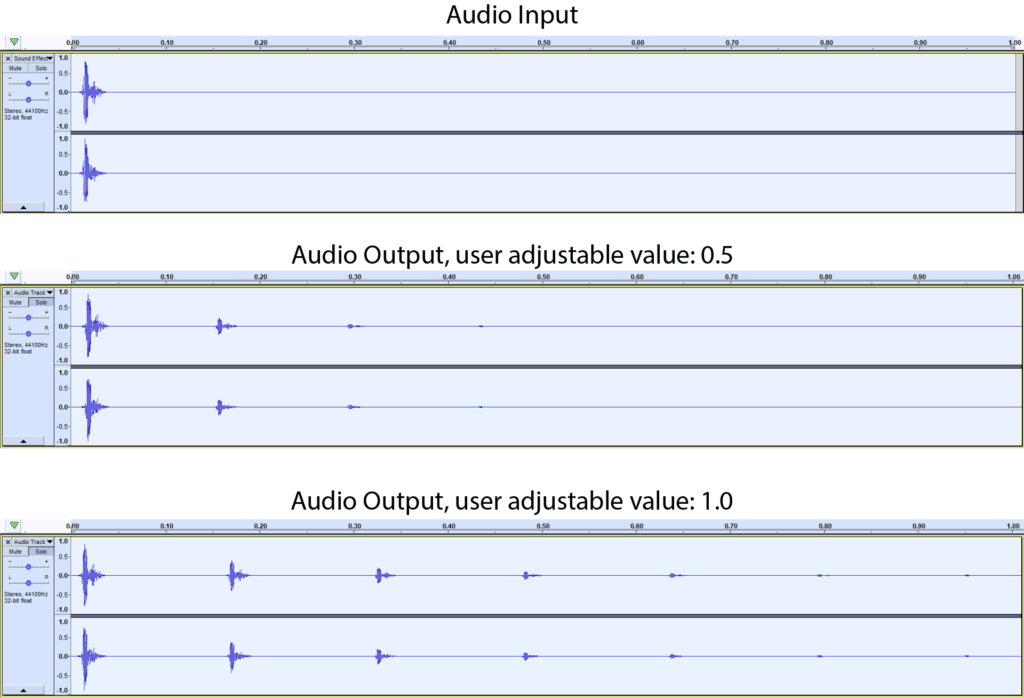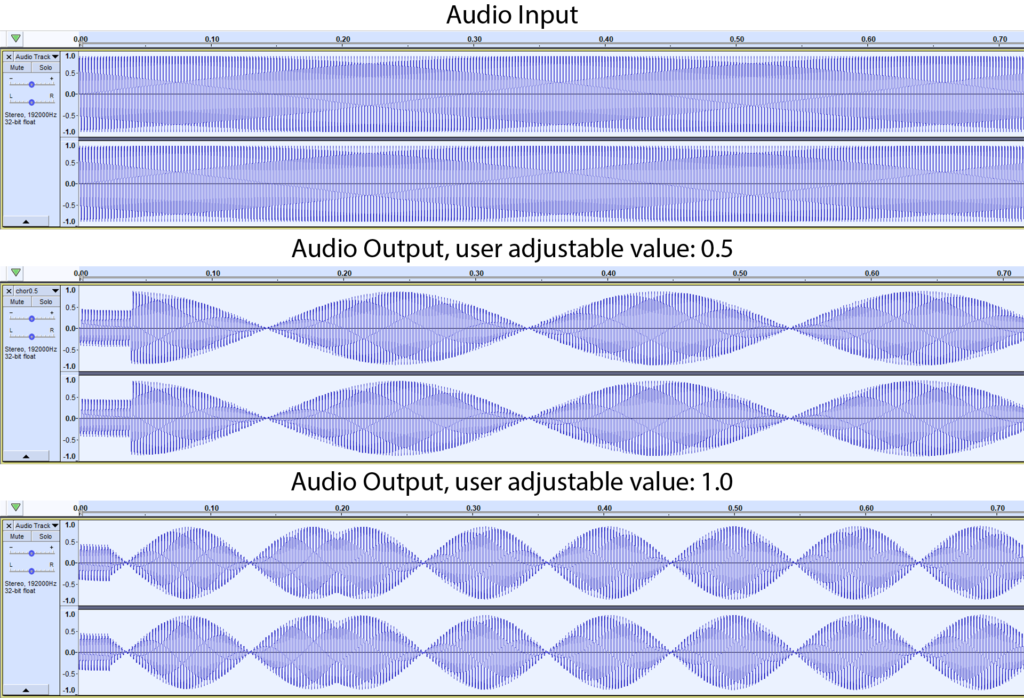Digital Signal Processing (DSP) is the use of a computer to perform a wide variety of signal processing operations and. This sector is continuously evolving and is used in various applications, including audio. DSP is heavily used in the music and film industry.
There are a lot of offline algorithms and applications to process audio DSP, but algorithms that perform DSP in real- time audio applications are more limited. These are used by live audio engineers and live musicians to enhance their instruments’ sound.
Such digital effects are usually computationally expensive if performed on a generic low-performance processor. Thus, executing DSP code on a Digital Signal Processor is much more efficient. Although today’s low-performance processors are powerful enough for basic audio processing, using a DSP device could improve quality, for example by using more coefficients, or running more effects at the same time.
The aim of this project was to identify and implement a number of audio effects as an audio effects library that performs real-time DSP on audio signals. These effects include: gain, reverb, echo, chorus, tremolo, equalisation and pitch change. Moreover, a demonstration application that makes use of this audio effects library to be used in live audio applications was developed. The code had to be optimised as much as possible for an efficient execution on a Digital Signal Processing Board. The library was used successfully in an embedded system with an ARM Cortex-M4 processor.
Tests confirm proper operation of the digital audio effects. Audio was played back to ensure there were no audible artefacts. Figure 1 shows the echo effect test. It was tested using a hand clap audio input and two outputs are shown at two different user- adjustable parameter values of 0.5 and 1.0. Figure 2 shows the chorus effect test. A 440 Hz sine wave was used as input and two outputs are shown at the same user-adjustable parameter values.


References
[1] (2016, Jul 7). Understanding Audio Effects: An Overview of Types and Uses. Available: http://blog.dubspot.com/understanding- audio-effects-an-overview/.
[2] M. V. Micea et al, “Implementing Professional Audio Effects with DSPs,” Transactions on Automatic Control and Computer Science, vol. 46, (60), pp. 55-61, 2001.
[3] N. Juillerat, S. Schubiger-Banz and S. M. Arisona, “Low Latency Audio Pitch Shifting in the Time Domain,” Icalip, pp. 29-35, 2008.
Student: Julian Spiteri
Supervisor: Dr Inġ. Trevor Spiteri
Course: B.Sc. (Hons.) Computer Engineering
